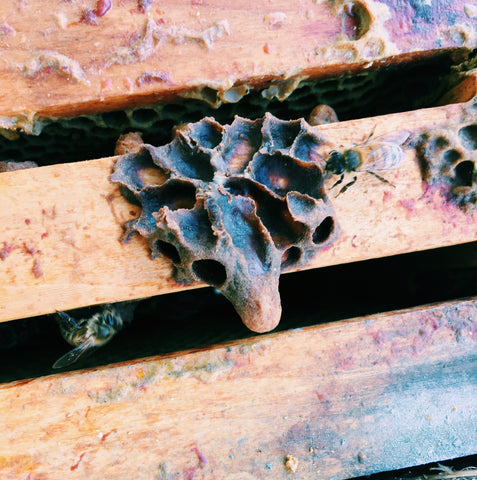This is my third year in beekeeping. And every year I'm confronted with something new. The saying goes: A first year queen will never swarm. A second year queen may swarm. A third year queen will most definitely swarm. Yup, that about sums up my experience.
What does it mean when the bees want to swarm? Swarming is the natural way that bees reproduce. The old queen leaves the hive and takes about half of the working bees with her. The bees remaining in the hive build a new queen. Thus, out of one colony, you now have two. The only problem is that honey bees won't survive in the wild (the varroa mite will get them sooner or later without treatment). They need the beekeeper. And a beekeeper needs her bees. If you're lucky, you can get your swarm back. But depending on where they decide to take up temporary residence before deciding on their final home, you may not be able to reach them. And if you keep your bees in an urban environment or keep your bees on your terrace with neighbors nearby (like me), you want to do everything in your power to keep those girls from swarming.
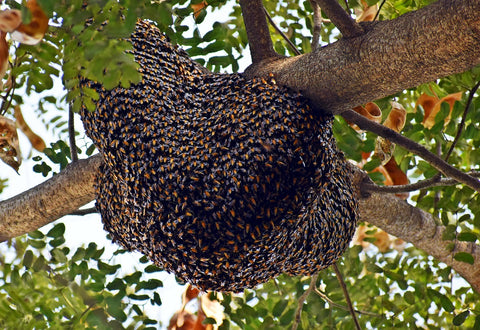
Be sure to always have some empty boxes, frames, bottom board and cover on hand in case you need to act quickly. Nothing worse than discovering your bees want to swarm and you have no where to put them.
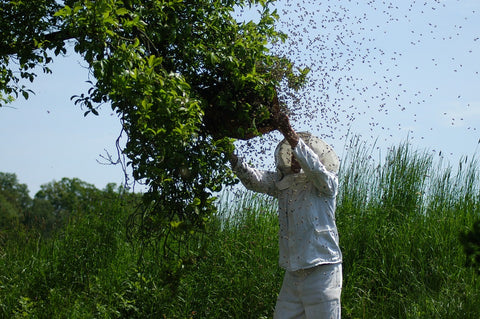
May/June are usually the time of year when bees will swarm. A sure sign of swarming are swarm cells (meaning elongated cells usually built on the bottom of the frames in the brood box). During your hive inspections which should now be done weekly, you can easily tip forward this brood box to check for cells on the bottom of the hive. If everything looks fine and you don't discover any swarm cells, make sure the bees have enough room to build. Add another box if need be. If you do find swarm cells, you have a couple of choices.
1. Simulate a swarm . This means you need to locate the queen and remove her along with 1 - 2 frames full of brood in all stages and 2 frames of honey and place everything into a new hive. The brood frames come in the middle surrounded by the honey frames. Since any forager bees will return to the original hive, be sure that this new hive has enough food to survive. Fill up the rest of the box with sheet comb. Unless you are going to place this hive at least three kilometers away from the original hive, the worker bees will return to their original hive. Be sure to place enough young (nurse) bees in the new hive by brushing them into the new hive (at least one full frame from the original hive). These bees are necessary to take care of the unhatched brood.
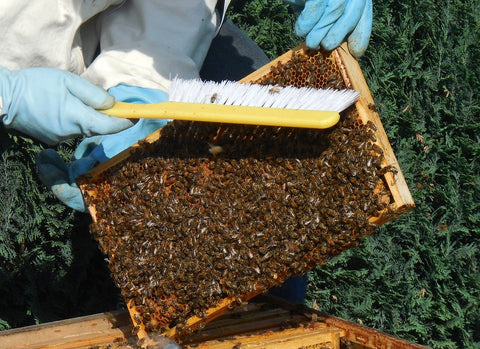
Leave the swarm cells in the original hive as that hive will now need a new queen. More than one remaining cell is fine. The first queen out will most likely kill the other queens. Nature! And Ta Da, you now have two hives. This method however requires locating your queen. Easier said than done! I took my entire hive apart, all three boxes and could not find her anywhere. So even though this would be my chosen method as it simulates what the bees wanted to do naturally (in essence you create an artificial swarm), I had to use the following method.
2. Make a split . With this method, you remove the swarm cells from the original hive and add them along with 1 - 2 frames full of brood in all stages and 2 frames of honey to a new hive. Thus, the original hive has more space (replace the removed frames with empty frames) no swarm cells. The new hive will allow the strongest queen to survive (if you placed more than one swarm cell into the new hive). I used this method and it worked! I now have three beehives on my terrace. However, swarm queens supposedly like to swarm. So it may be wise to replace this queen with a selected queen later in the season.
The newly created hive will appear quiet compared to the original hive. Remember, it doesn't yet have any foraging bees who leave the hive to gather nectar. Once the queen cells are capped, it will take about three weeks for the queen to emerge, go on her mating flight, safely return to the hive and start laying eggs.
With either method 1 or 2, you will need at least three full frames of bees for the hive to make it through the winter. If this is not the case, you will have to recombine the two hives. If you have several hives, the chances of a strong colony are increased when adding brood frames from different hives.
3. Remove the swarm cells . This method is also often used by beekeepers but to me, it seems to interfere the most with their natural urge to swarm and reproduce. Each time you see swarm cells (and this will be often with this method), you cut them off of the frame and remove them from the hive. This method does not alleviate the bees urge to swarm. But it prevents them from swarming.
A word of caution. Don't confuse swarm cells with supersedure cells. These elongated cells are usually built in the middle of a brood frame (not on the bottom of the frame as with swarm cells). The bees build these cells when they are getting ready to replace the old queen.
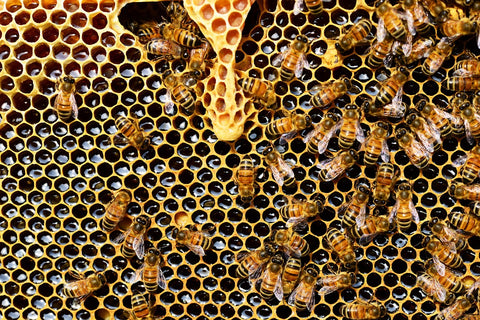
Swarm season should be over by now. wow I survived another year without having to go reclaim my bees from my neighbor's terrace. Let's see what next year has in store for me and my gals.

